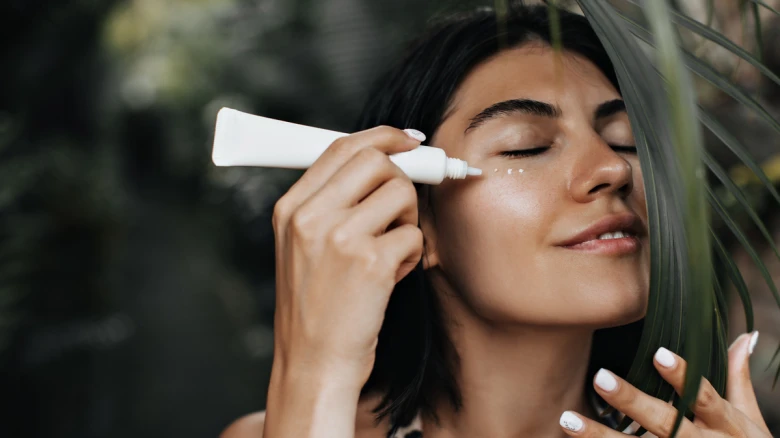Sports

No sunscreen can block 100 percent of the UV rays, but 30 SPF blocks about 97 percent. It is also recommended to look for a broad-spectrum sunscreen. These sunscreens help protect against both UVA rays, which cause premature ageing of the skin, and UVB rays, which cause sunburn.
mso-fareast-language:EN-IN">Digital Desk:
"Times New Roman";mso-fareast-language:EN-IN"> Vacations have just started, and
the summer fun has begun. People are outside enjoying nature and soaking in the
bright summer sun. While spending time outside has positive health benefits,
the sun can be a short-term and long-term enemy.
mso-fareast-language:EN-IN">Avoiding ultraviolet light, a risk factor for all
types of skin cancer, could prevent more than 3 million skin cancer cases
annually.
mso-fareast-language:EN-IN">However, it is not always easy to avoid these
harmful rays, especially during the summer months, which is why using sunscreen
is important.
mso-fareast-language:EN-IN">Lauren Kole, M.D., Assistant Professor in the
Department of Dermatology at the University of Alabama at Birmingham, discusses
her best sunscreen practices.
mso-fareast-language:EN-IN">Let’s have a look at what she has to say:
mso-fareast-language:EN-IN">When picking out sunscreen, Kole suggests, one
should start by looking at the sun protection factor. The AAD recommends using
30 SPF or higher. No sunscreen can block 100 percent of the UV rays, but 30 SPF
blocks about 97 percent. It is also recommended to look for a broad-spectrum
sunscreen. These sunscreens help protect against both UVA rays, which cause
premature ageing of the skin, and UVB rays, which cause sunburn. Additionally,
exposure to both UVA and UVB may lead to skin cancers in the future. Since most
outdoor activities include sweating and/or getting wet, it is useful to look
for water-resistant formulas as well.
mso-fareast-language:EN-IN">Most sunscreen comes in one of four basic forms:
spray, cream, gel, or stick, and each type has its own application benefits
consumers should consider.
mso-fareast-language:EN-IN">Kole emphasises the importance of using
FDA-approved sunscreen. Two ingredients, zinc oxide and titanium dioxide,
are proposed to be safe and effective for sunscreen use, while two others,
aminobenzoic acid and trolamine salicylate, are not considered safe or
effective for sunscreen use by the FDA. All sunscreen containers are required
to show an expiration date. If there is no date, the product should be
considered expired three years after purchase.
mso-fareast-language:EN-IN">How to use it
"Times New Roman";mso-fareast-language:EN-IN">
mso-fareast-language:EN-IN">A quality sunscreen cannot be fully effective if it
is not correctly applied. Kole suggests applying sunscreen at least 15 minutes
before going outside. This allows the sunscreen time to fully absorb into the
skin and form its protective barrier. The national recommendation to reapply
sunscreen is every two hours; also reapply after swimming or excessive
sweating. Follow the sunscreen directions regarding how often to reapply.
mso-fareast-language:EN-IN">Areas one cannot see or reach are commonly missed
spots. Have someone else help apply sunscreen to hard-to-reach areas like the
upper back, or make sure those areas are covered.
mso-fareast-language:EN-IN">Kole suggests not replacing sunscreen with tanning
oil or lotion. Most of these lotions will not have nearly the recommended SPF
for maximum UV protection.
mso-fareast-language:EN-IN">Wearing coverings such as hats and sunglasses, as
well as being extra diligent about applying sunscreen when in direct sunlight
between 10 a.m. and 4 p.m., are other sun-protection best practices.
mso-fareast-language:EN-IN">After-sun best practises
mso-fareast-font-family:"Times New Roman";mso-fareast-language:EN-IN">
mso-fareast-language:EN-IN">After sun exposure, Kole suggests taking cool baths
to reduce the heat, applying moisturisers and drinking plenty of water to
prevent dehydration. Hydrocortisone cream may be applied to sunburns to ease
discomfort.
mso-fareast-language:EN-IN">People should also avoid using products ending in
"-cain," because they will not help the burn. These products only
reduce pain and will not treat the underlying skin damage, and overuse of these
products can have side effects.
mso-fareast-language:EN-IN">With any sunburn, avoiding the sun while the skin
heals and making sure to cover the sunburn area every time one heads outdoors
is very important.
mso-fareast-language:EN-IN">
Leave A Comment